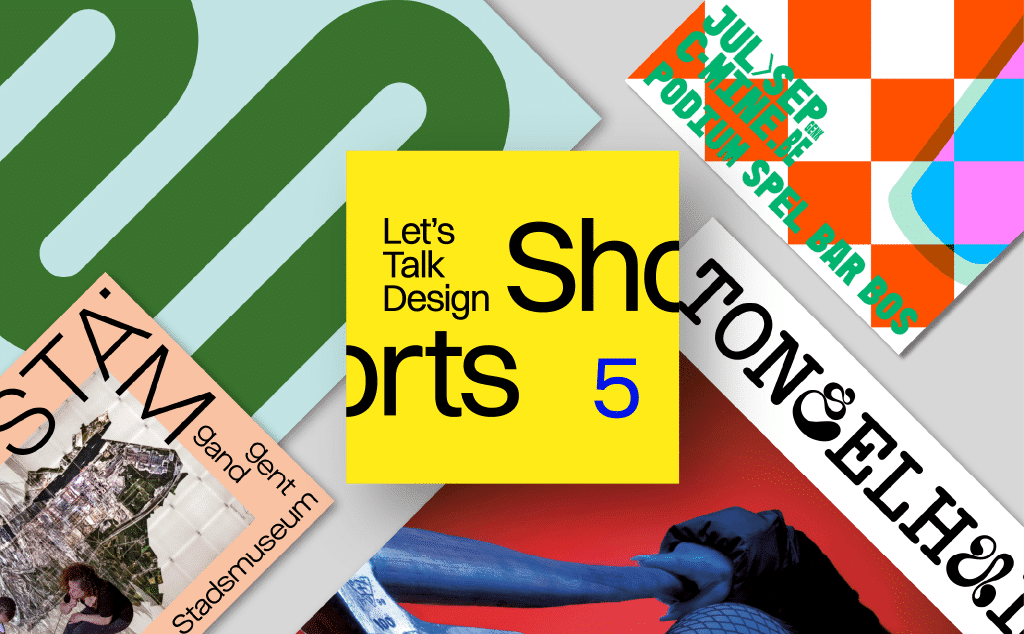This episode is the first in a renewed longer interview format where I have a conversation with a designer to find out what makes them tick.
Episode 5 of Shorts is available on
YouTube Spotify Apple Podcasts
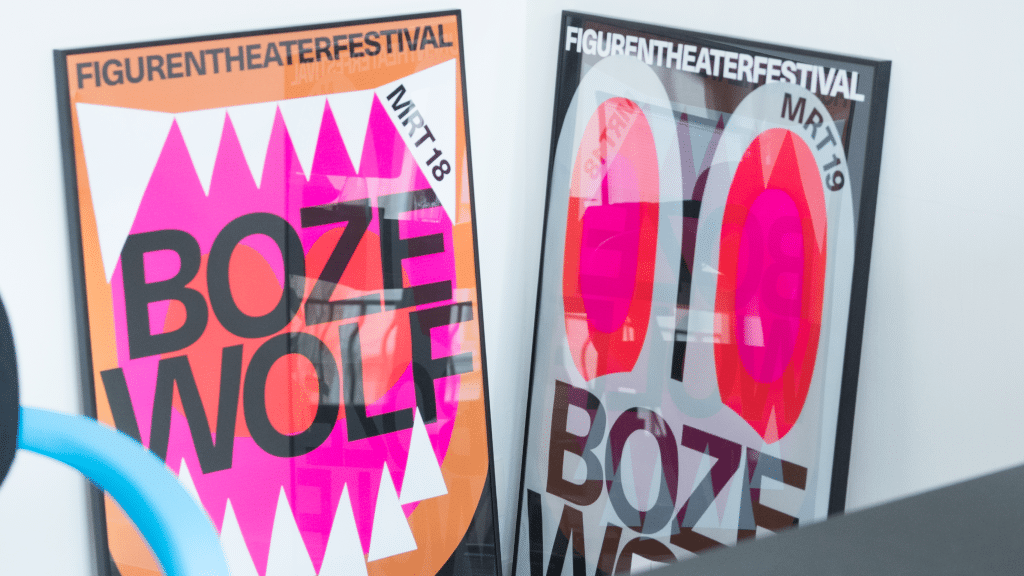
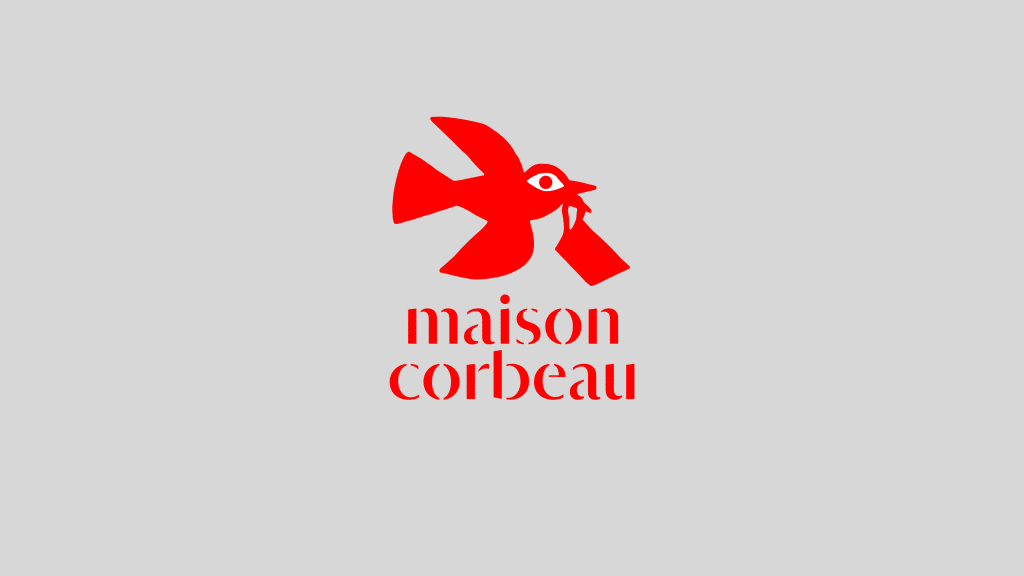
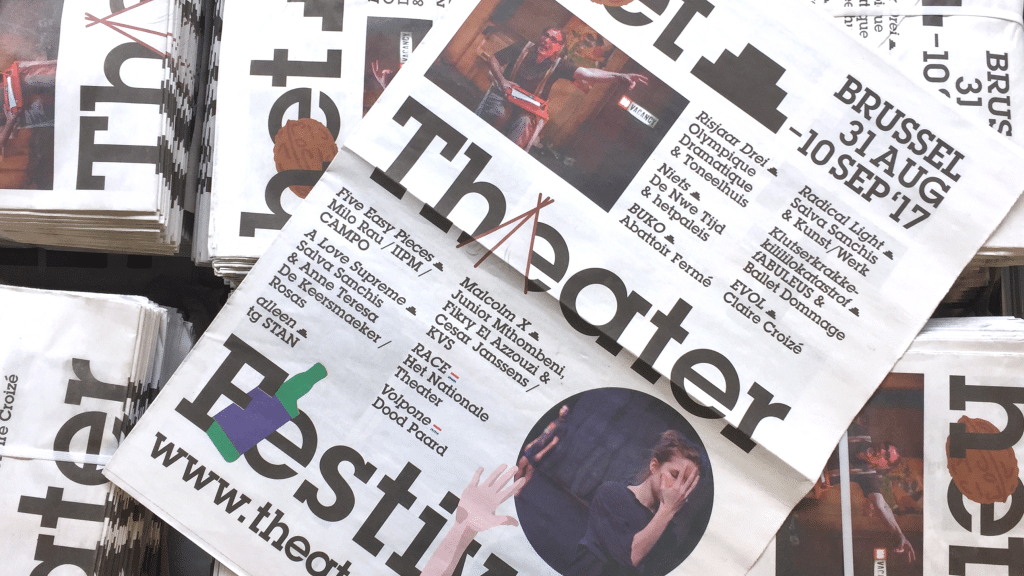
Transcript
Laura Bergans: Hi so I’m Laura, Laura Bergans, and as you hear Bergans is Berg, the first or the second part of Bureau BoschBerg, because we founded Bureau BoschBerg with the two of us, Sang van den [00:01:00] Bosch and Laura Bergans, and Bureau BoschBerg is a graphic design agency. We also do some art direction.
A lot of projects are graphic identities, but we also design. Expos we for example, this last, or this year, we designed an expo for Mode Museum in Hasselt. Or we do also the book design. For example, we designed some travel guides together with Bent Van Looy.
And at the moment we are with three persons in the studio. We have a third colleague Marion. And it’s very nice to work with the three of us. But of course, For a lot of [00:02:00] projects, it’s not only the three of us we collaborate with photographers, interior designers, depends on the projects. Programmers. Yes. We are we are happy to collaborate with a lot of other designers and people.
Timothy Helmer: Yeah, so I know you work mainly because of the cultural work you do in graphic design. Is that the focus of the studio?
Laura Bergans: Yeah, it actually, it’s, it was, it’s, it grow, it grows it grows naturally like that. We really like to work for the cultural sector, cause we like to go to theater or dance performance or to go and see expositions or.
Go to festivals. So it’s really nice to work for that kind of assignments. But it’s, it went naturally like that because one of the first assignments or the first graphic [00:03:00] identities or projects I worked on was for Z33. A house for art in hustles, and then it starts evolving like that.
Mostly working for design, art, theater. Yeah. Performances. But for now we’re starting to work on some other projects too, like, ceramic brands or some school groups, so we’re happy to work for other kind of clients too. But yeah, yeah, we’re really, we really like the diversity of projects.
So We are not like, oh, it’s not cultural, we don’t do this, no. We really like the diversity but yeah
Timothy Helmer: Yeah, so it’s not that you’re against working for commercial brands, but it’s just…
Laura Bergans: Yeah, it’s [00:04:00] how it works nowadays people think we only do cultural work, because they see, mainly see this kind of work on our website probably, but yeah.
We are, we would be happy to do to get some new clients in totally different sectors.
Timothy Helmer: Who knows, this interview might help.
So, how did you become interested in graphic design?
Laura Bergans: Ah yeah, I was thinking about it and I thought it first happened in secondary school and, actually I didn’t know what graphic design was or it even existed. I was just designing posters and making flyers for the school ball or the popcorn sale. I don’t know.
Then I thought maybe it was even before, because [00:05:00] I think I was about eight years old, and I had my own museum in my bedroom, where I showed my collections of stones and some other stuff, and back then I made Little posters and I used to spread them around the house to make promotion for my museum.
And because my dad had Illustrator on his computer, I was able to experiment, with the, with Illustrator. I remember I didn’t understand the pen tool at all. I didn’t It was too complex to understand back then, and so for example, the letters I’m, I draw with hand or mouse were not very readable but I was always happy to see the gradients for example coming out of the printer and then, yeah, that way I made posters.
Timothy Helmer: For [00:06:00] those who don’t know Illustrator is a design tool to draw, basically.
Laura Bergans: Yeah, yeah, actually, yeah, to draw. And it was then, I think, only when I had to choose what I would do after secondary school, that I noticed graphic design was something you can study and you could become a graphic designer. So I was happy to, Explore and look at the schools who, who are offering this and yeah, then I decided to go for it.
Timothy Helmer: Sort of a logical choice. Basically,
Laura Bergans: I remember I had to choose because I was also thinking about going to study languages at university. And then I was hesitating between those two. And I thought, Oh, no, let’s just choose the most. I thought, and that [00:07:00] was graphic design, I thought, and so very happy I made that choice back then.
Timothy Helmer: So do you still have interest in languages or?
Laura Bergans: Yes. Like now I feel not so. Confident with English and that’s, I, I think it’s really a pity because I really liked to do languages in secondary school and French too. So I’d like to fresh, get a fresh refreshment or something. But my first job as a graphic designer was in a French speaking design agency in Brussels.
Timothy Helmer: Okay, which one?
Laura Bergans: It was called Sign, but I don’t see or hear them anymore, so I don’t know even if…
Timothy Helmer: I think they still exist, but they’re [00:08:00] not that present anymore.
Laura Bergans: Yeah, it’s a totally other, Yeah, because I, I think maybe French speaking and Dutch speaking design agencies are very separate, maybe, and in Belgium, unfortunately.
Timothy Helmer: It’s very true, a big language barrier, yeah. So in your design work, are there any principles or philosophies that you consistently apply to your work? French.
Laura Bergans: Yes, I think so. It’s very important for me to first think about a concept, idea, or a focus. This concept will determine the form.
So, maybe something like form follows idea, or something like that. And if you, I think if you work like this, it also protects you. From [00:09:00] creating just beautiful designs that probably resemble another thousand other designs in the world. Probably it’s also something, which, which is a big focus on the, in the…
A school in Sint Lucas in Ghent where I studied. So we also learned it that way.
Timothy Helmer: So do you have a standard methodology to start your design concepts?
Laura Bergans: A good briefing is really important. So a good talk with, the client and then inspiration I think for me it’s important to not look for inspiration in other graphic designs.
Because then, yeah, you’re probably making something again and again, and it won’t be better than the original. So for me, it’s more inspiring to look at [00:10:00] art, or, vernacular design or culture, or go to a theatre performance. Or maybe sometimes even when I go to a performance, which is not interesting for me, which, yeah, unfortunately is not my cup of tea.
And then I’m totally, not in the performance, but just thinking about the assignments I’m working on, and then I get good ideas too. So bad performances, or performances I don’t like, are also very inspiring. Just to have time. Yeah, you have to be there in your seat for… One or maybe sometimes even four hours, I don’t know, and you’re sitting there and your brain has a lot of time to think and that’s, yeah, a lot of ideas come that way
Timothy Helmer: from being bored, actually.
Laura Bergans: Yeah, maybe being bored is, yeah, it’s [00:11:00] something you have important to you have to get, you have to have time to get those ideas. It’s not, often it’s not from being behind your computer screen and looking at other graphic designs. Often it’s when walking around in the city or… Yeah, being in a boring theater, I don’t know.
Not that all theater we go to is so boring. For luckily not. Most of them are really nice. Yeah. Yeah, it’s a bit strange because we were, we have a lot of assignments in theater. Yeah, and maybe also some other things. We focus on, or we think are, is, is, are important, is like typography we have a big focus on typography and also the details of [00:12:00] it no widows or orphans, and then when you’re finishing a design or you, you’re going to the client with the first ideas, important is for me also to be fully convinced of it.
What you present otherwise you can’t yeah convince them
Timothy Helmer: true Yeah, or they will ask questions that you can’t answer
Laura Bergans: Yeah, indeed, or maybe they are like, oh very nice and then at the end you’re not convinced about it Not
Timothy Helmer: nice to so never a good thing. No, no Sounds a bit. Well, I think A lot of designers can totally understand what you mean by presenting stuff that you don’t, well, where you’re not completely convinced.
I think everyone in his career has moments like that. But it’s important to keep that in mind. [00:13:00] It shouldn’t happen, right?
Next question. What do you think the role of graphic design is in shaping a brand’s identity?
Laura Bergans: Yeah. Yeah, of course. It shapes the brand or maybe I should say it makes the brand visible in print and online. And I think a good design or a good graphic identity is mirroring and strengthening and maybe even shaping the brand’s identity.
But you have to get the chance, to do that. Or I should say how it’s all. It all depends on the collaboration you have. Probably your role as a graphic designer can be as big as you want it to be, or as a client wants it to be. Can you think along with the theme? Do you get really well [00:14:00] defined briefings?
Are you there from the start? Yeah, we really like to be involved as much as possible, or we really want to get a clear view on what the missions of the brand are, or what they stand for, but yeah, it always depends on the collaboration you have and the budget, for example, how deep you can dive.
Timothy Helmer: You need to be involved in the whole process instead of being the last person in line. Yeah, that’s,
Laura Bergans: yeah, indeed. Indeed. Indeed. Maybe not only for graphic identities, but also for like campaigns, for example, for Tonila’s. We did a rebranding or a new graphic identity last year and now for the start of the season in September, we really.
Collaborate with the [00:15:00] team, the intern, internal team of the house with the makers the performers, and we were sitting together for a lot of times and talking about what it should be like, this campaign. And at the end, we were all very happy with what came out of it. And, but we, we had a lot of routes to go and a lot of IVs because we are so many people.
But it worked out really well because, yeah, it was, we were there from the start and everybody was there. So it was, yeah, it was really nice.
Timothy Helmer: Are you involved in the art direction? If you do like a brand identity for a cultural house and you determine the photography style, are you still involved afterwards in the photography or as an art director, is it just giving them guidelines and then letting go?
Laura Bergans: [00:16:00] It depends. So for some graphic identities. We keep on designing everything for them and for others we make a brand guide and give it to the cultural house, for example, and they, continue working with it, and also for campaigns like it. Indeed working with a photographer yeah, sometimes we choose a photographer, I think of the ID for the shoot and organize it to do the total package.
And then we are there at the day of shooting too. But other times, sometimes a performance already exists, for example or a product already exists and the photos. The, the, the images are, are already with, and yeah, then it’s only translating it to the brands or to the graphic [00:17:00] identity. So it really depends and it’s.
Nice to have both of, this all with different ways of working, because sometimes it’s also kind of, nice to look how can we, for example, for a brochure for, cultural house. And you have all these kinds of different pictures by different photo photographers. And then there’s one illustration too.
And they all have to fit in one brochure or on one website. And they all have to look like they’re owned by this house, this cultural house. And that’s, that’s nice to work on too. How can they all be a bit, together or belong a bit together. [00:18:00] As different as they are.
Timothy Helmer: Can you tell me about one of your favourite projects you worked on so far?
Laura Bergans: Actually, most of the time, if a project, a project is nice to work on or not, it depends on the persons behind the project, or behind the brand the persons you have to collaborate with. So. Yeah, and I was thinking about that and I was like, Oh, actually, we’re very lucky with all of the people we work with, because we have really nice, yeah, colleagues or, people we work for.
And, yeah, I think we’re lucky. So it was also difficult to choose the one favourite project also because. I like the diversity of projects we’re working on from graphic identities to expo design, web design, book [00:19:00] design, like for social media even.
Timothy Helmer: So yeah, maybe the question should be, well, two things. The fact that you call your clients’ colleagues already says a lot. But maybe the question should be the project you’re most proud of instead of your favourite project, because that’s the difference.
Laura Bergans: I’m quite proud of the graphic identity and all the deliverables we did or do for Het Theaterfestival.
We started working on it in 2016, and so it was one of the first big graphic identities we did. So we felt really proud then about it. And also because again the persons behind the festival are very, very nice to [00:20:00] work with. Some years ago they got a new director, but… And we were like, oh, it’s done there will be a new graphic identity because, yeah, a new character, a new graphic identity.
But they were like, oh no, we still like it, it’s still very relevant and why should we change it? We really like it. So we were happy to continue working on it and, for example… This year was the first time we made a magazine for them and, we, I was, yeah, very happy to, see it was still possible to develop new ideas within this seven year old graphic identity.
So yeah.
Timothy Helmer: It’s nice to hear that a new creative director or a creative, is it a creative director of a cultural house?
Laura Bergans: Yeah, or maybe. [00:21:00] Brother, I must think about a function which is behind her name. I don’t know. I don’t know.
Timothy Helmer: I would say it’s a creative director, but I’m not sure
Laura Bergans: No, it’s not a creative director because they have a big jury, which is selecting all of the performances which will be on the festival because it’s like the most important performances of last cultural year are shown there again. And so it’s not one person who is choosing the performances.
Timothy Helmer: Big it’s a big compliment if a person that important for, for a cultural institute changes jobs and you have someone new who wants to start fresh and still feels that the identity is well fits the brand.
Laura Bergans: Yeah, yeah, indeed. We were very happy, yeah.
Timothy Helmer: Haven’t heard that [00:22:00] before, actually. Well, I would say most of the time they want to do their own thing.
Yeah. Indeed. And start, yeah. Doing their own stuff.
Alright, so how do you balance creativity and practicality in your design work? ’cause I know, because of the work you do a lot of cultural work, but also. Bigger design jobs like musical festivals, all that stuff there, it gives a lot of practical deliverables. So how’s that balance?
Laura Bergans: Yeah. I can’t be creative like eight hours a day, so it’s good to have this balance or this, A way to alternate designing, sending emails, making prize offers.
And also, we’re the three of us so when somebody is like, Ah, now I’ve had enough [00:23:00] of like, designing thousand pages book, we can change, or we do a lot of ping pong too, when we start, for example, with a new project. Somebody starts on it and another one continues and indeed there’s a lot of emailing and video calls or real life meetings but probably it’s good to have this, this balance between all these kind of things.
Timothy Helmer: Is that if you would if we would translate that into a percentage, how much of the job is doing anything else than pure design work?
Laura Bergans: Yeah, that’s difficult, but probably even if you’re like sending emails or reading briefings [00:24:00] or being on the train to a client, even then a new assignment can be in your head and yeah, they can.
Pop up so you’re even then you’re designing I or even in the weekend probably if I think like this because yeah, these most of the time, like I said before don’t come when you’re like they have to come and I’m behind my computer, but percentage, maybe, maybe, maybe it’s, I wish it was. More designing than it’s now, because, yeah, there’s a lot of things to do.
But percentage, that’s really difficult.
Timothy Helmer: Ideally, you would like to, in the future, it might be good to have, [00:25:00] that you grow from three to four people, or five. So you can divide the work a bit more practical, and do more creative stuff, right?
Laura Bergans: Sounds good, yeah. Maybe, yeah. Yeah, I was really happy to, when, when this new colleague came, so when we went from two to three.
But I don’t think, it should be like twenty people here. It’s nice to know everyone very well and to know who’s good in what and to get a view on everything, probably. Not every, every detail, of course, but. Yeah. It’s also, yeah.
Timothy Helmer: Do you have plans to grow or is it just, well, we’ll see how it goes and we’ll grow organically?
Laura Bergans: Yeah, until now we were like, we’ve been like, oh, we will see how it goes. [00:26:00] And that has been very, working very well until now,
For now I’m very happy with the three of us, but maybe it can be a few more, I would, if I’m dreaming, I would be happy to have some different other clients too, maybe, yeah, and not Maybe not so cultural or maybe fashion or, like a grocery store. I don’t know. Can be nice too, I think.
Timothy Helmer: So, what you’re saying is that with the work you’re doing right now, you don’t really need more people?
For the projects you do, but you want to grow and diversify in the future. Yeah, you’ll probably need to expand. Yeah,
Laura Bergans: probably. Yeah. Yeah. But for the moment, we’re it’s going [00:27:00] well. But yeah, maybe. I’m always and, and Sang is the same. Let’s see. We’ll, we’ll see. And, and we were very happy when we opened, the job offer for the third person.
Thank you. To get a lot of response because we, we didn’t know how it would be like because we never did it, but we were very happy and yeah, so we know it’s possible to, to find someone extra. Maybe then it should be yeah, yeah, yeah, we, we didn’t know some, anyone would reply even. But yeah they did and maybe then the extra person should be like a programmer or somebody with a bit different background, I don’t know, copyright or can be
Timothy Helmer: diversified a skillset.
Here is the last [00:28:00] question. Do you ever had to deal with particularly demanding or a challenging client and how did you handle it? I think it’s a question a lot of designers can relate to.
Laura Bergans: I think we have a lot of demanding or challenging clients because for example, a lot of them are artists.
Our people who have a lot of love for their project, our job, so it’s really important for them. And most of the time they know quite well what I want, but yeah, they still have to be able to translate it to us. Or we have to understand what they want. But so actually that can be as demanding or challenging.
As they are, because they come to us and because of the way we [00:29:00] work and they trust us and we have a good conversation, it always turns out well. This trust is really important and the reason why they chose to work with us is also important, but we have the impression that most of the clients, of course, they look at our portfolio or they even speak to other clients.
And then. That’s how they get to know us and yeah, then it works out well.
Timothy Helmer: I guess you have a lot of referrals. Yeah. Because of the type of work.
Laura Bergans:
Yeah. Sang always says, works, create, works. No, work, creates, work. True, yeah. Yeah, so, yeah, that’s how it works, yeah.
So, if we have a good [00:30:00] briefing, and a good close cooperation, we prefer to be closely involved, as I said before. We don’t want to work purely in execution. We really like to… I’m not sure if it’s a good idea to think together or to develop something new together with the client. Sometimes the client also needs a bit of self confidence, or, because, strange you say, maybe, but we want to design, like, new things, and not blend in the world full of designs.
I remember a situation with a B&B, a big B&B with a garden and several other projects in it, and we were working at their [00:31:00] new graphic identity. And it was still the very start of it we presented the first ideas and the first sketches. And they were like, yeah, we expected something different totally different actually.
But it’s really, really nice, but it’s not like what we expected. We have to think about it. And we were like, oh, what’s, what, how will this turn out? But then they called us and they said like, yeah, we went to a restaurant and they had a really particular way of designing their menu and we were looking at it and yeah it got our attention and then they were like that’s what we need to we we need our own design and something people haven’t seen yet so we go for it and we’re like very happy so
Yeah.
Timothy Helmer: Let’s just say on the commercial side, consumer, , side, that’s a difficult thing. It would be different, [00:32:00] I think, on the cultural side.
Laura Bergans: Yeah, it’s quite commercial, I think, or it’s, yeah, that’s like Vureka, but yeah, probably when they come to us, they also see it, our website or our Instagram, it’s like, it’s not like. Sometimes I look at Instagrams of other designers and I’m like, Oh, everything is blending in so well and has the same colour or it’s working so well together, all these different designs.
And then I’m like, yeah, but actually it shouldn’t, for me, it shouldn’t be like this. It’s, it’s my point of view, of course, because to design something different for every client. And yeah, then. It’s maybe not working very well if you see it all together, or because it shouldn’t. Yeah, they all have their own identity.
Timothy Helmer: [00:33:00] Absolutely, I think that’s totally fine. It would be weird to have too much of the same.
Laura Bergans: Yeah, but you see it often. But maybe it’s easy for the client who they know what they’ll get if they go to an agency like this.
Timothy Helmer: Yeah, I don’t think they will be helped in the best possible way.
Laura Bergans: No, me neither, but yeah.
Timothy Helmer:All right, Laura, thank you for this interview.
Laura Bergans: You’re welcome.
Timothy Helmer: Is there anything else you want to add or mention? Now would be a great time.
Laura Bergans: Oh, yeah, I remember. If we have to, like, look for new projects, we’re, like, quite next to the zoo. If the zoo needs a new graphic identity, you can hear the lions in the office, the lions in the office here, so, yeah.
Timothy Helmer: They need to call you, yeah.
Laura Bergans: Yeah.
Timothy Helmer: Thank you, Laura, for the interview. [00:34:00] Thank you for your time. It was good to have you on the show and see you next time.
Laura Bergans: Bye.
